In almost every garden plot, blackcurrant grows. Having removed the harvest, many summer residents forget about the shrubs, and then complain about the reduction in the number of berries. Blackcurrant needs care in the fall: pruned branches, additional nutrition, spraying.
The events are simple and in a timely manner, gardeners achieve stable annual yields of healthy berries. Unpretentious culture with proper agricultural technology bears fruit up to 15-18 years, bringing abundant harvests.
Content
When to start pruning currants in autumn
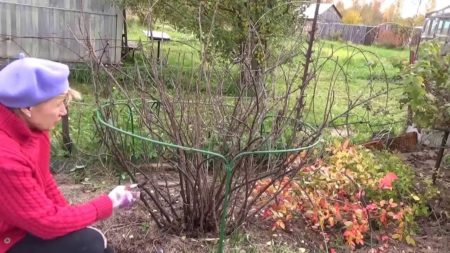
Blackcurrant pruning and brush care in the fall are the main activities. Bushes each year form new shoots, overgrowth appears, and the formed branches continue to grow. Given that the largest berry yield is provided by shoots aged one to four years old, older branches are removed.
Schemes of the procedure depend on the age and condition of the plants. Dates are selected based on the climate of the area, but always before the first frost. Too early pruning leads to the growth of new fresh shoots that will inevitably freeze out in the cold. Late pruning will only harm the bushes, seriously weaken the currant.
A suitable period is from mid-September to early November (depending on the region). At this time, currants completely discard the leaves, it is easier to deal with the age of the shoots. The culture stops sap flow. Trimming contributes to:
- rejuvenation of bushes;
- increase in the number of berries;
- the growth of larger fruits;
- the formation of a healthy beautiful crown of the bush;
- improving the taste of currants;
- aesthetic appeal of bushes.
Cultivated plantations are easier to tolerate wintering. In the cold, weak and young shoots freeze, which generally weakens the entire bush. If you remove the extra shoots in advance, you can avoid stress for currants. When pruning, most of the dangerous pests and their larvae are destroyed. On neglected plantings, yields are much smaller, while the berries are tasteless, of low commercial quality.
Cut currants every year, observing the rules of agricultural technology of culture.
How to crop
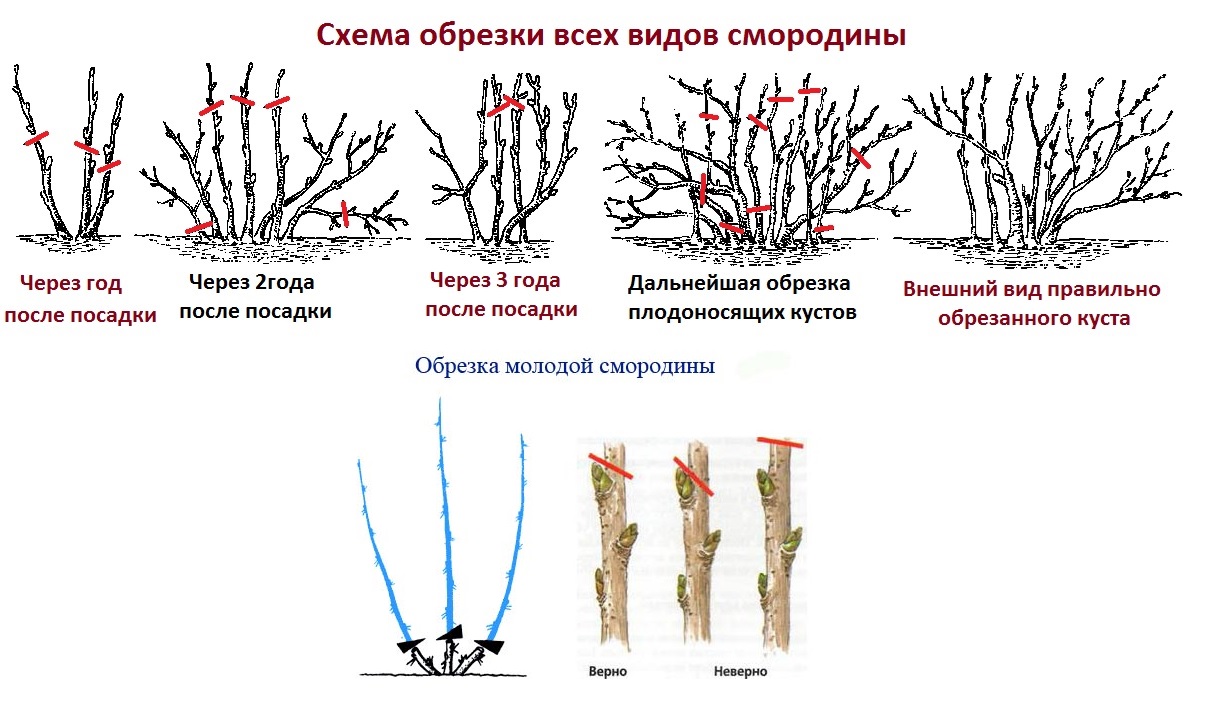
Which shoots prune:
- old
- deformed;
- sick;
- dry
- young, too thickened plantings;
- not giving berries.
The branches lying on the ground, protruding beyond the boundaries of the crown of the branch, are removed. Preliminary plantings are inspected, noting for themselves weak, damaged branches, growing low above the soil surface and shoots in the middle of the bush. They are removed first of all, leaving from 6 to 10 powerful and healthy shoots on the bushes.
For the procedure, use a garden pruner, a saw. Typically, remote branches are removed from the site and burned. Trimming Rules:
- cut branches above the kidneys by 1-1.5 cm;
- do not leave stumps on the bushes;
- Do not break the currants with your hands, only with tools.
First of all, dry and deformed branches are removed, then they switch to green ones that did not have time to ripen. Slices are covered with var.
If there are a large number of dry branches with black core on the bushes, they are uprooted and burned. After disinfection of the soil, it will be possible to plant new seedlings in spring.
Rejuvenation of an old bush scheme
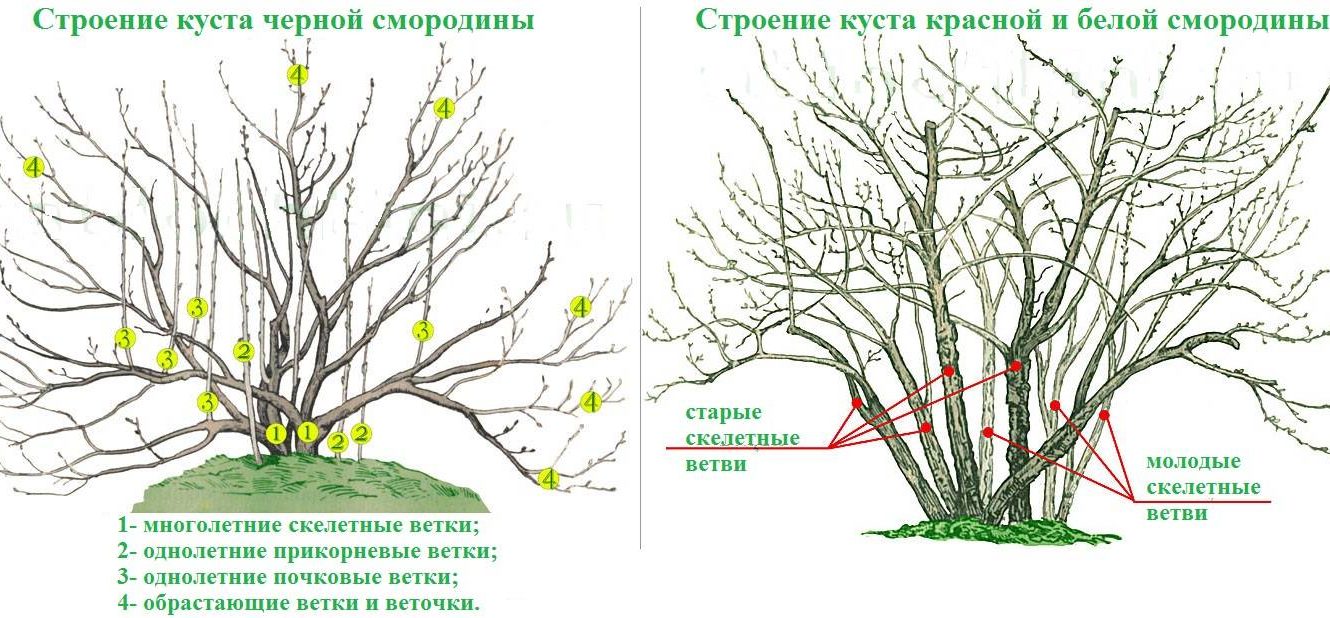
To rejuvenate currant plantings begin in five to six years. Five-year-old shoots have passed the peak of productivity, they are cut. They remove up to 50% of the bush, cutting off deformed, diseased, old, thickening branches. For the first time, planting is rejuvenated for the fifth year, feeding potassium-phosphorus fertilizer after the procedure for a quick recovery.
A year later, next fall, inspect the bushes. Mature strong processes are selected (18-20 pieces), all the rest are cleaned. After another year, about half of the old shoots and 10-12 new ones are left on the bush. As a result, in 3-4 years they manage to rejuvenate the old plantings of currant, without replanting new seedlings.
The formation of a young bush
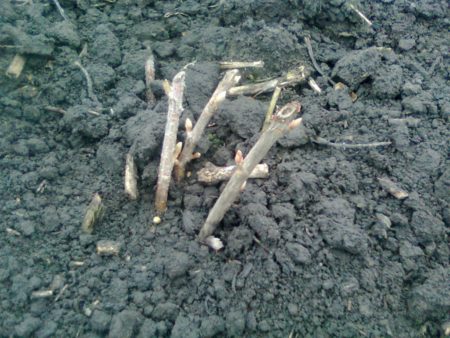
To obtain early maximum high yields of berries, it is necessary to correctly form young plantings of currants.
- To begin with, only the planted berry bush is cut, leaving 3 buds on the branches. The number of shoots is no more than four.
- When planting two-year-old seedlings, bushes are cut in July. Each branch of the bush is cut by about 8-10 cm.
- In the first year after planting in the fall, the strongest shoots are chosen, all the rest are cleaned. So they form the skeletal basis of the future bush.
- Side branches knocking out of the crown are cut, which will obscure the flowers and berries.
- Usually, up to 14-20 branches growing from the soil are left on the bush. A larger number heavily loads the bush, the culture does not have enough nutrition. The berries on such bushes are small, the crop is small.
Autumn Care
In addition to pruning, blackcurrant bushes need additional nutrition, autumn watering. It is necessary to take care of preventive treatments of plantings from diseases, protection from cold weather.
Long wintering period - stress for plants, without care and winter preparations plantings freeze, get sick. All this affects the yield indicators in the future.
Treatment of the bite zone
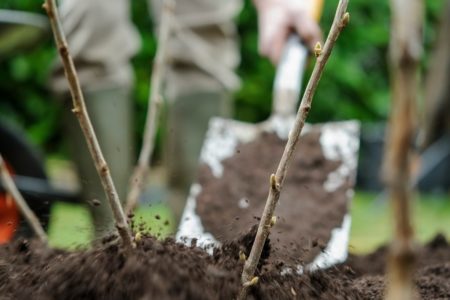
The area around the bushes requires special attention in the fall. There are various points of view of gardeners on the use of agricultural techniques:
- mandatory digging of the soil around the bushes in order to destroy possible pests;
- only mulching the zone, without digging the soil.
All options have supporters, but the results are verified in practice. Some gardeners loosen the near-trunk zone, and after top dressing and watering, mulch the soil. Others are limited to only one digging, while others do not touch the soil, sprinkling the ground with mulch closer to frost.
When digging, the forks are buried no more than 8-10 cm, so as not to damage the root system of the currant. For mulching choose any suitable materials:
- covering tissues;
- leaves (dry, without rot);
- small twigs;
- shavings;
- dry sawdust.
Mulch the soil after water discharge irrigation. Mulch will retain moisture, protect the currant root system from frost in the absence of snow cover
Watering
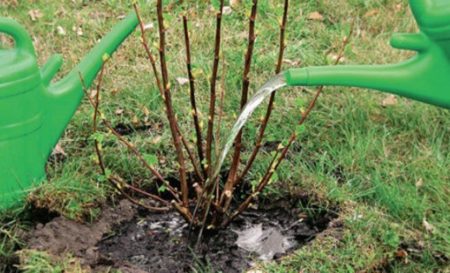
In autumn, in the absence of rain, water-charging irrigation of landings is carried out. What does such a procedure give?
- Saturation of the soil with moisture.
- Root system growth.
- Protect the earth from rapid freezing.
- Reducing the risk of rapid thawing of soil during winter thaws.
- Maintaining stability of the soil structure.
- Creating a reserve of moisture for spring.
It is no coincidence that watering is called charge watering, since its essence is in introducing a large amount of water. Dates - from mid-September, when the bushes begin to drop leaves.
Norms:
- planting up to five years, watered 3 buckets under a bush;
- older planting - 5-6 buckets under the bush.
Water should be absorbed into the soil in the area of the bushes, and not spread outside. It is recommended to water from a hose, to irrigate plants. On sandy soils, watering rates are higher, on clay soils the amount of water is reduced by 2-3 times.Also, norms are reduced if prolonged rains fall.
Top dressing
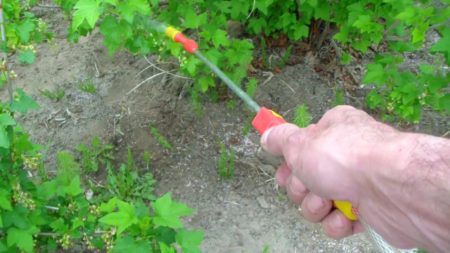
After harvesting, currant bushes need proper nutrition. The plant gave all the energy to ripening berries, weakened, and without top dressing it can not tolerate winter cold.
Fertilizer mixtures suitable:
- superphosphate and potassium (enough for 1 tablespoon with a hill of fertilizer to sprinkle under the bushes, close up in the ground);
- wood ash (both for nutrition and mulching).
For bushes, the age of which "passed" in five years, fertilizer rates are doubled. Before the frosts under the bushes, the introduction of humus or well-rotted mullein is allowed. During the autumn application, the organics decompose during the winter into easily digestible components that are useful in the spring to currants. In addition, organic matter as a mulch, protects the earth from freezing, retain moisture in the soil.
Soil bedding
Another technique is adding soil for planting currants. After abundant water-loading irrigation and top dressing, bushes often expose roots. Such plants run the risk of freezing in the cold, so they pour fresh, clean soil. It is recommended to lightly compact the soil after adding.
Some summer residents mix soil with ash and only then pour the mixture under the bushes.
How to spray currants in the fall from pests and diseases
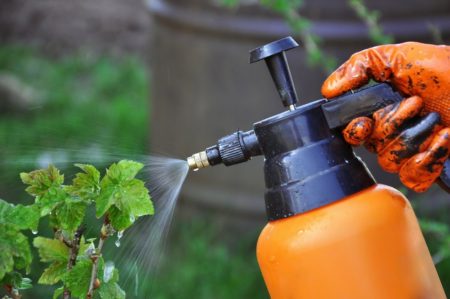
In October, currant plantings treated from pests and various diseases. In the presence of lesions, damaged shoots are cut out, they dig and disinfect the soil around the bushes. During the collection of berries, spraying with drugs is prohibited, after the return of the crop, treatment of the bushes begins.
The danger is a kidney tick. The insect before the cold climbs into the buds of the berry, winter there, continuing its dangerous activity in the spring. Damaged mite bushes slow growth, dry out. The buds do not open on the shoots, the normal development of culture is disrupted. The kidney mite carries a variety of currant-dangerous infections, such as mycoplasma disease.
For the fight using various drugs:
- Fitoverm;
- Akarin.
They process the bushes immediately after picking the berries, while it is warm. The action of bactericides with a decrease in air temperature will not be so effective.
Closer to October, more effective drugs are used from the tick:
- Nitrafen;
- Rotor-C.
When processing comply with the instructions for use of the product, personal protective measures.
If powdery mildew was seen on the currant bushes in the summer, then in the autumn it is required to carry out the treatment of plantings with special preparations. Without spraying, infected plantings of blackcurrant often freeze in the winter and become ill. By spring, the bushes look weak, lifeless, often die. Of the ready-made funds are offered:
- Speed;
- Fundazole.
A good result is given by spraying the branches with a solution of tar soap and sulfur:
- rub soap shavings (about 2 tablespoons);
- 40 grams of sulfur are added to water, mixed;
- soap shavings are added to the solution.
The composition is treated with bushes immediately after harvesting the berries, while there are still leaves. It is advisable to spray the planting 2-3 times. All damaged and diseased shoots are cut and burned. They also carefully rake and destroy all the foliage collected under the currant bushes.
Blackcurrant infection prevention in autumn
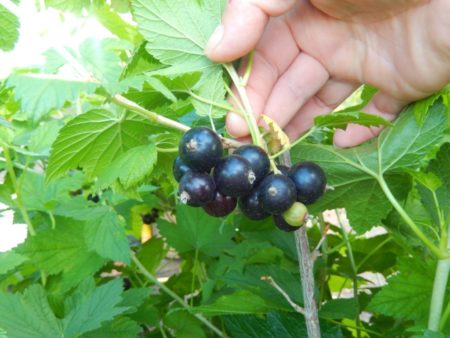
In addition to treating damaged bushes, gardeners do not forget about disease prevention, protecting healthy plantings from possible pest attacks. Events:
- spraying karbofosom, Bordeaux mixture;
- processing plantings from the atomizer with copper chloride;
- disinfection of bushes with infusions of onion husks, ash, tobacco.
To disinfect the soil under the plantings, 1% solution of copper sulfate, a pink solution of potassium permanganate are used.
Possible reproduction of blackcurrant in autumn
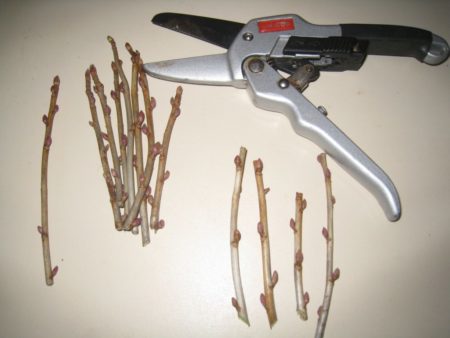 In autumn, gardeners harvest currant cuttings for planting in the spring. So they propagate the variety they like, and also save the diseased bushes from complete death.
In autumn, gardeners harvest currant cuttings for planting in the spring. So they propagate the variety they like, and also save the diseased bushes from complete death.
It happens that on currants found signs of illness. Pruning did not help, and you have to uproot the plant. But before that, it is recommended to carefully watch the shoots, since there is a chance to find healthy branches for cuttings among the year-old shoots.
They are cut, cut into cuttings (10-15 cm), planted on a pre-prepared bed. A pair of kidneys is left over the surface, the processes are planted at a slight slope.
In winter, a bed with cuttings is torn with cloth, burlap, and then snow. In spring, after awakening the cuttings, the strongest and development are selected, the rest are removed. Cuttings grown by autumn are transplanted to a permanent place. Planting and care are standard, in compliance with the rules of agricultural technology. Planting with cuttings in the fall is suitable for the southern regions, in areas of risky farming, it is advisable to plant bushes in the spring.
Branch bending
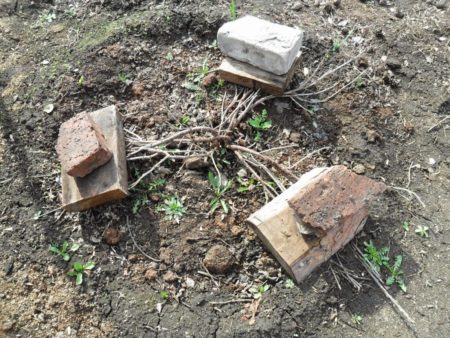
Blackcurrant is unpretentious and frost-resistant, but in cold winters there is a risk of freezing branches. It is believed that the plant withstands frosts down to -27ºC ... -30ºC, but at lower temperatures the bushes freeze.
To avoid this disaster, in regions with severe winters, branches of the bush are bent to the ground.
Ways:
- Bend branches to the ground, press with stones or fragments of bricks. Sprinkle with soil on top.
- Wrap branches with agrofiber, slightly bend to the ground.
- Wrap currants with non-woven materials, adding mineral wool as a warming layer.
Some gardeners use plastic wrap. But this is not recommended, shoots do not “breathe”, condensation forms, there is a risk of plant death.
In the spring, currants are opened early, carefully removing the protection and straightening the branches. You can’t be late, otherwise the branches will sprout, the bush will fall ill and die.
Tips of experienced gardeners
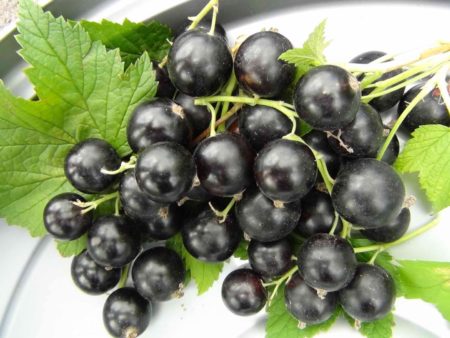
Gardeners with experience have accumulated a lot of “secrets” for caring for black currants, which allow them to collect high yields annually.
- When pruning in the fall, excess root shoot near the bushes is removed. Leave 3-4 shoots, no more.
- In advance stock up necessary materials for mulching bushes, shelters.
- Use a high-quality tool for cutting, be sure to disinfect it with special solutions.
- Timely remove old and diseased shoots. They will not yield crops, but how sources and vectors of fungal infections are dangerous.
- When loosening the soil around the bushes, it is advisable to use cultivators and forks, but not shovels.
- As a mulch for berry shrubs do not use straw. It attracts a large number of rodents that damage the roots and young stems of the bushes.
- Unlike red varieties, black currant all branches over five years old are considered old.
Each summer resident should know how to care for black currants in the fall, taking into account the specific climate of the region, growing conditions. This ensures a large crop. The care includes a number of mandatory events. Timely pruning, watering and top dressing contribute to the good development and wintering of plants, an increase in the number of berries for next year.

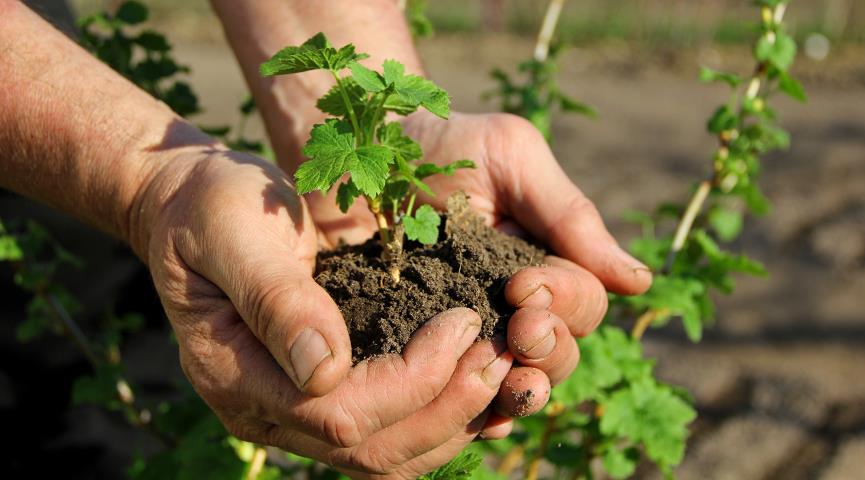
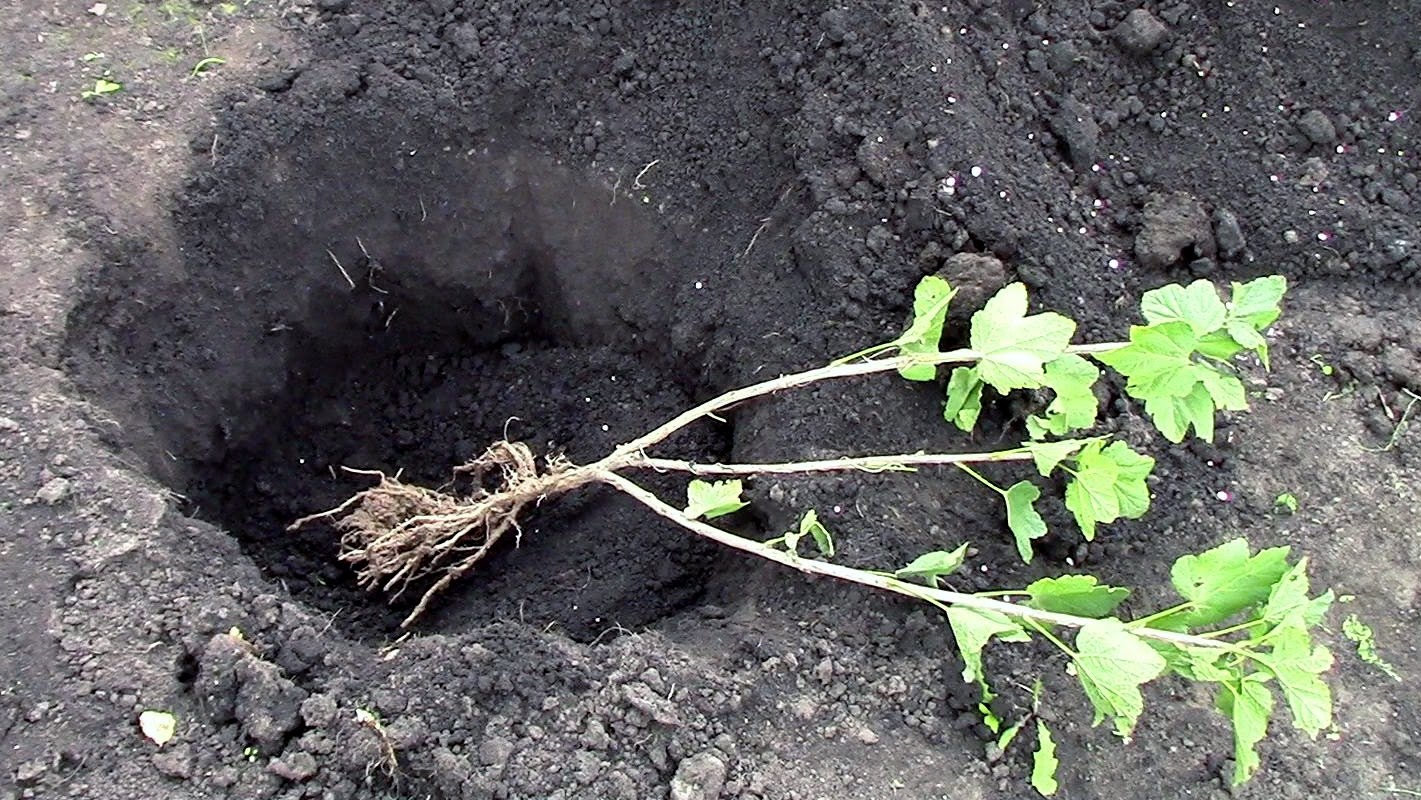
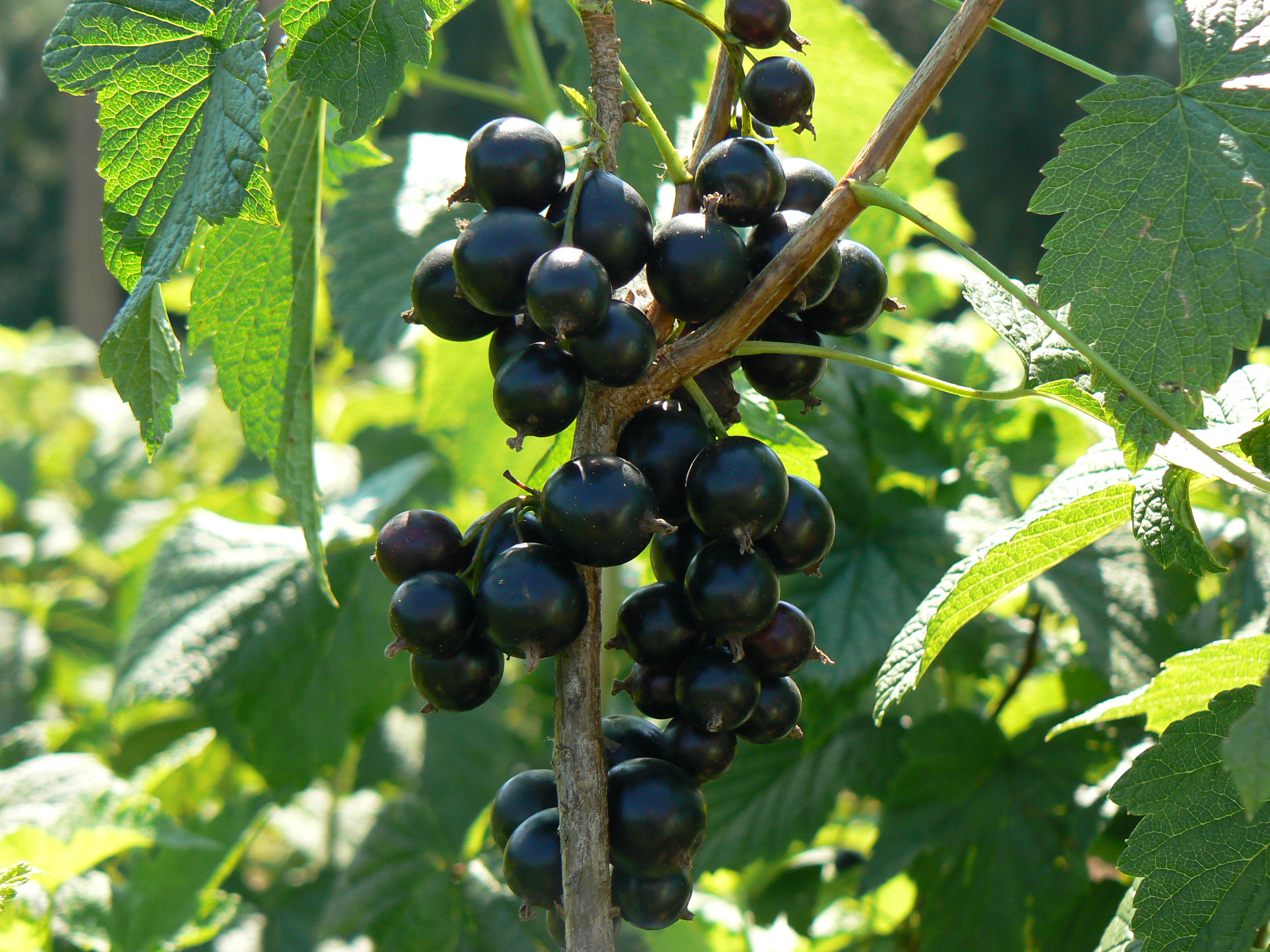
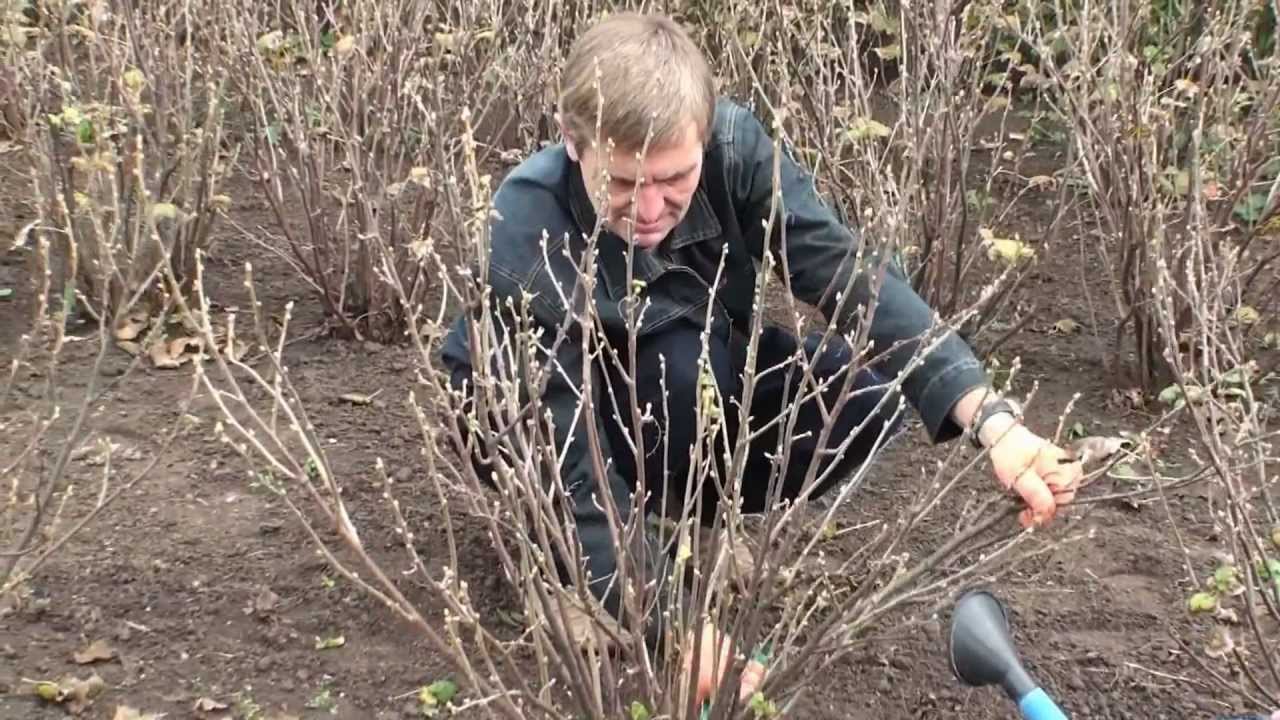 Autumn currant pruning scheme for beginners
Autumn currant pruning scheme for beginners Currant care in autumn and preparation of bushes for winter
Currant care in autumn and preparation of bushes for winter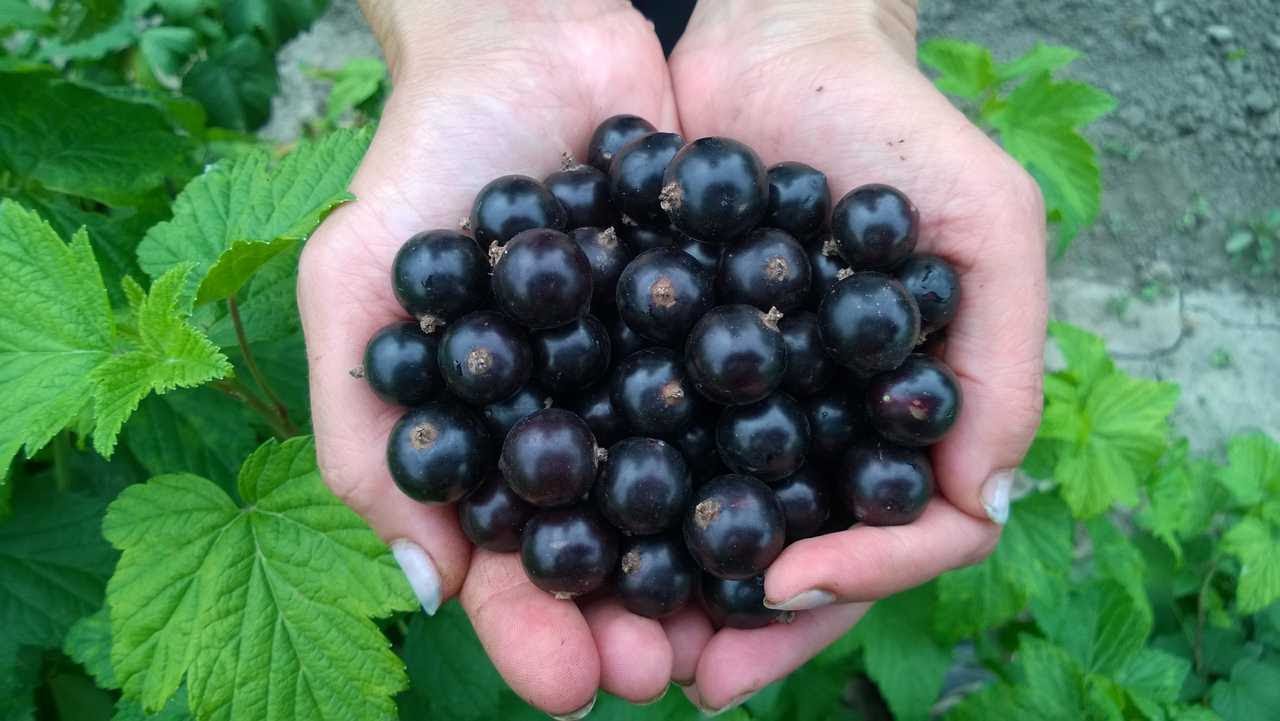 It's time to feed the currants - the best feeding
It's time to feed the currants - the best feeding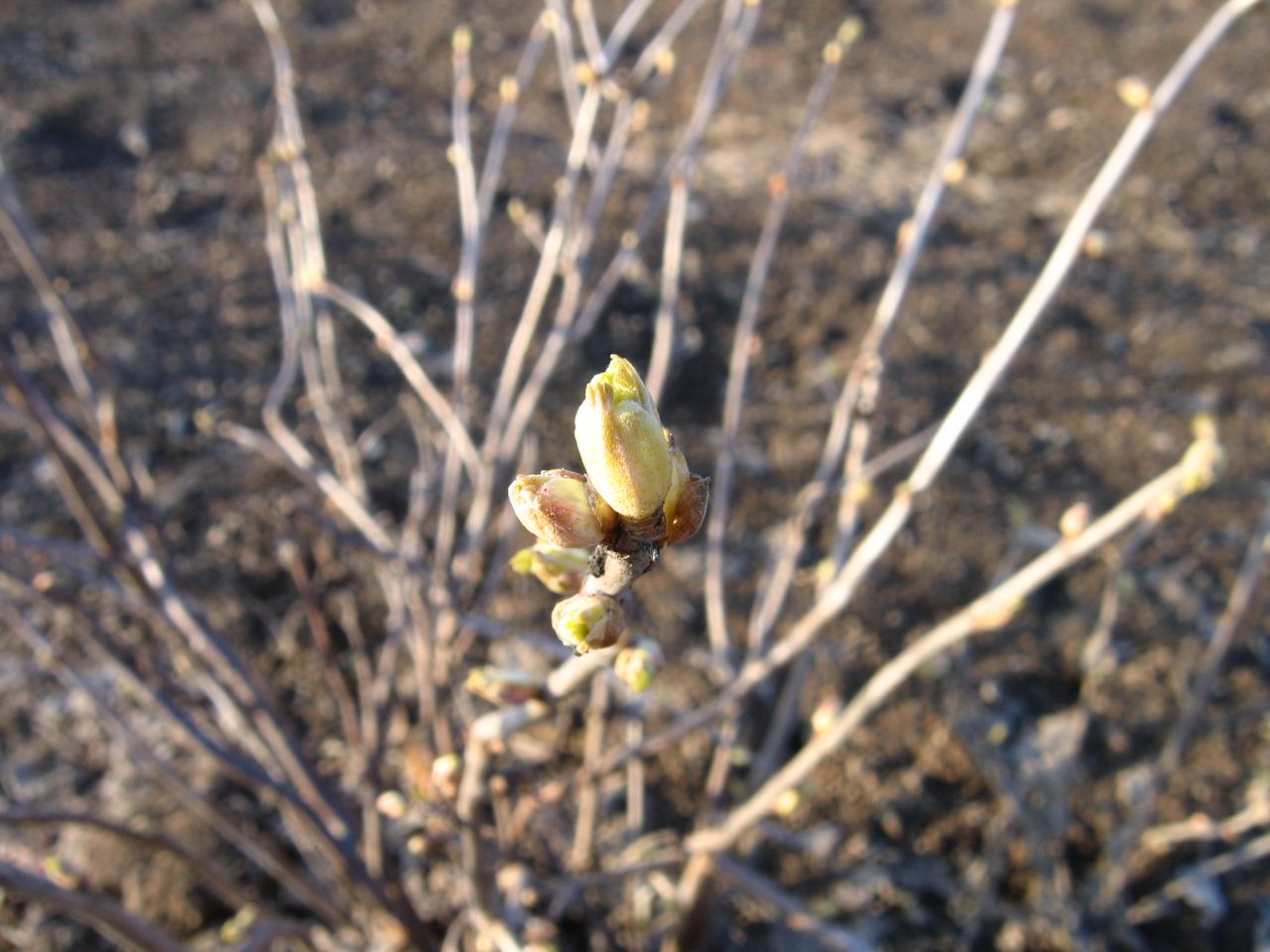 Spring treatment of currants from pests and diseases
Spring treatment of currants from pests and diseases